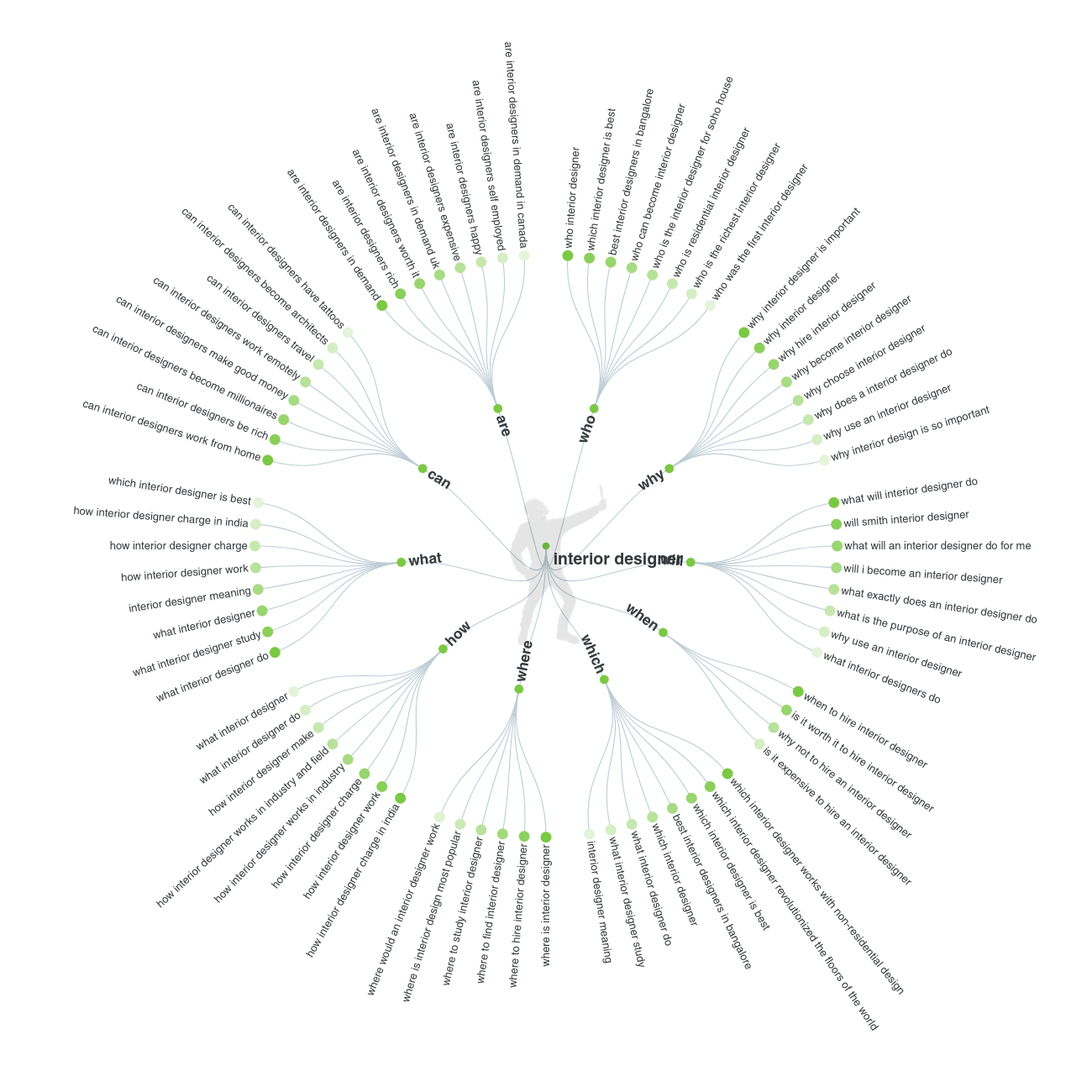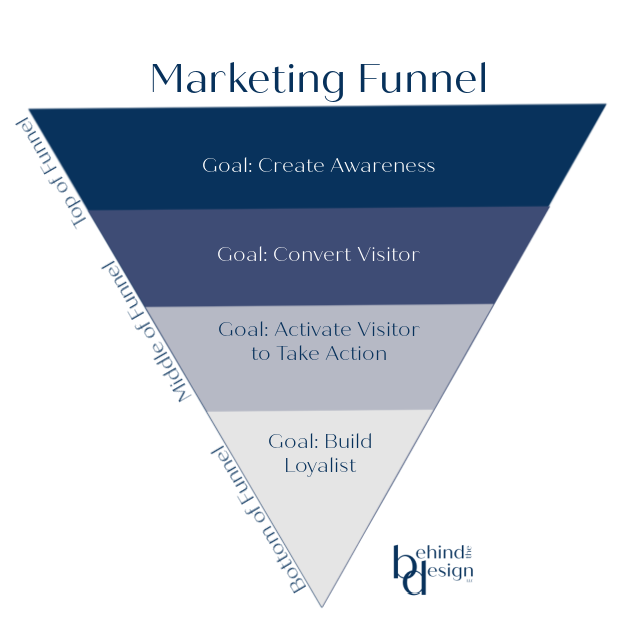8 Ways to Drive More Traffic to Your Interior Design Website
Jan 04, 2022
Gone are the days of the ’90s where you could just throw together a cheap website and have a massive influx of customers by just posting a quarter-page ad in the local newspaper or word of mouth. In 1995, the world wide web had around 23,000 free-floating websites out there. Now, the internet houses over a billion sites. Driving traffic to your interior design website is harder than ever because of this. There is a real science to the analytical breakdown search engines execute to land customers on your page.
Additionally, many interior designers built a website and never touched it again. This is referred to as a static website. The problem is that when you have a static website, your visitors will not be compelled to revisit your site because there is nothing new. Additionally, search engines will not include your site in results pages because there is nothing new.
This article will discuss how you can better use your website to drive more traffic, generating more leads. In addition, you can download our free guide, "25 Ways for You to Drive More Website Traffic".
Your website is your online storefront, where visitors can learn more about your offerings, build trust in your brand, and eventually become lifelong customers. Since your website is an important aspect of your marketing and sales efforts, maximizing your effort to better serve potential clients is important.
8 Ways to Organically Improve Website Traffic.
1. Dial-in your target audience
2. Perform keyword research
3. Deliver quality content that entertains, educates, or both
4. Develop a market funnel with valuable offers
5. Use off-page search engine optimization
6. Become an expert on your Google Profile
7. Share content across social platforms
8. Use Google Analytics to measure and analyze
1. Dial-in Your Target Audience
Improving your website traffic starts with understanding your audience and delivering the information and content they want. In static websites, we often see three major problems. First, the company is trying to be all to everyone. This doesn’t work because it dilutes your messaging, and your visitors walk away feeling like you don’t understand their needs.
Second, we are all guilty about talking about ourselves. Be sure your website talks about your clients and how you help them solve their problems. Finally, many websites don’t encourage visitors to engage by offering value.
Related Article: “3 Key Indicators to Help Interior Designers Identify Their Target Market”
Start by taking a closer look at your website through the eyes of your target audience. Be honest with yourself in determining your visitors’ experience. Is it clear how you help your clients, or are you just talking about yourself? Is there a clear path for visitors to follow? The more you create images and content that specifically speak to your audience, the more time your audience will stay on your website.
2. Perform Keyword Research
When a prospect is looking for an interior designer, they will often search Google using certain keywords, such as “interior designer near me.” Unfortunately, this prospect will only look at the first page and maybe the second page of the search results. Therefore, your website must appear on page one or two of the search engine results page (SERP) to attract more website visitors.
Related Article: “The Ins and Outs of SEO – What Interior Designers Need to Get Started”
It is your job or your marketing team’s job to identify those keywords and phrases. But beware, it isn’t just a list of words that will help your site rank higher on the SERP.
Rather it is a group of words or phrases typically thought by your audience.
Research shows 64% of online searchers use 4 or more words. Multiple keywords or phrases are called “Long Tail Keywords.” A good example is “How to find a good interior designer near me.”
You can use tools such as Google Keyword Planner, Moz Keyword Explorer, or Semrush to determine your keywords. A free site called Answer the Public is also a fun way to search terms because it delivers results graphically. Identify a few keyword themes and use them throughout your website copy to get started.

3. Consistently Deliver Quality Content that Entertains, Educates, or Both
Typically, your website will include your core web pages in addition to your homepage. Your core pages are listed in your navigation. For example, they might include: services, products, about us, testimonials, portfolio, contact us. These pages are somewhat static in that once the content is written to represent your brand and speak with your audience, you will most likely not change the actual content.
The best way to engage your audience is through a blog. According to Hubspot, companies with blogs produce an average of 67% more leads monthly than companies that do not have a blog.
Related Article: “Why Blogging Can Help You Grow Your Interior Design Business”
Blogs may seem time-consuming, and they are to some degree. However, they are the best way to drive more traffic to your website, establish your credibility in the market, and actively gain more followers.
Blogs allow you to share your knowledge and projects more consistently. The best-read blogs entertain or teach something new. This is also a great way to increase your content, attracting search engine crawlers through on-page SEO.
Ideally, you want to add content to your site every week, but sometimes that isn’t possible with your design work. Adding content every week does two things: it gives your visitors a reason to come back, and it talks to the search engines. You may decide that you can only add new content twice a month. That is okay as long as you do it consistently.
I have a couple of tips to keep you on track.
- Take pictures and jot down a few words around the process as you move through a project. One project can result in multiple content opportunities.
- Mark your calendar for an hour each week to gather your notes and images.
- Create an outline of the different content and how it can be used for your website and social channels.
- Create a calendar with due dates outlining what will be added to the website each week or month.
- Ask others in your firm to help. Encourage their ideas and ask them to take photos as well.
- Hire a marketing freelancer or service to help you develop the content. Larger firms typically have an on-staff marketing person. However, small firms can take advantage through freelancers.
Each new page or blog post should also include a call to action. This is simply asking the visitor to do something such as sign up for your blog updates, newsletter, free guide or ebook, or design consultation.
4. Develop a Marketing Funnel with Valuable Offers
A marketing funnel visually represents how someone goes from a quick visit to an actual loyal client. When we visualize a funnel, we see a wide-open end. This is called the top of the funnel, and it represents everyone that is driven to our website, either through search engines, social media platforms, or other websites. As someone moves through your website, they go deeper into the funnel. At each stage, we offer more to the prospect.
For an interior designer, you will outline this marketing funnel for your visitors. The goal of the top of the funnel is to get more traffic to your website. This may include external links from social platforms, referring sites, or search results. Once the visitor arrives, we take them in a little further, capturing their interest by offering quality content that speaks to them personally.
Next, we want to offer them something of value to encourage them to give us their name and email. This can be a monthly newsletter, a PDF of your top 10 best design tips, a guide to buying furniture that lasts, or an ebook on staging a home for the holidays. Ideally, you want to build out a few valuable offers that encourage signing up.
Once a visitor hands over their contact information, they have become a prospect and move further down into the funnel. Next, you want to nurture that prospect with more valuable content that will warm them through to the buying cycle. You can do this through an automated email and through monthly emails.
These continued interactions are often called touchpoints, as it allows you to build a relationship with the lead. As they approach the bottom of the funnel, you convince them to buy. At the bottom of the funnel is building loyal customers. Even after someone purchases, what can you do to create a loyal customer.
Related Article: “Taking a Closer Look at Customer Experience - What is the Experience You Want to Create?”
5. Use Off-Page Search Engine Optimization to Attract Search Engine Bots
On-page SEO (also known as “on-site SEO”) is the practice of optimizing web page content for search engines and users to improve your SERP position - the position a website holds in an organic search. For example, methods like blogging, using internal and title tags, increasing site speed, etc.
Off-page SEO is the practice of optimizing signals that happen off of your website. This primarily includes links coming from other sites. You want to build the links pointing to your website through three specific link types:
1. Natural links are ones that a blogger might use to reference your blog article because the content supports their content.
2. Manual links are acquired by asking others to link to your content. This may be through customers or influencers.
3. Self-Created links are links that you have created by adding your company to forums and list websites.
Your social marketing effort, guest blogging, and influencer marketing support your off-site SEO work. Off-page SEO has a lot to do with the quality of content you offer. Sites will link to your site when they find value. This is the digital equivalent of word-of-mouth.
Before you reach out to every site you can find, you want to look for experts in the field and reputable. Having random, unrelated sites link to you will not help SEO, especially if Google sees those sites as poor quality. Furthermore, by submitting your links to random sites that aren’t vetted, you run the risk of getting your site de-indexed by Google.
The goal is to get viewers to your site from the right link while getting all the “link juice” from the backlink. Link juice is passed through do-follow backlinks where the source site is voting for your article or post to be clicked on, increasing the link’s authority. The other type is a no-follow backlink that does not favor your site, resulting in passing no authority from the source site to the linked site - decreasing your SERP position.
6. Become an Expert of Your Google Profile
Your business name should be polished and visible from the minute your site is live. Establish a Google business profile once you have an active domain, so people have a nice little snapshot of what your business is about.
Using Google’s Business profile allows you to create a profile at no cost, manage your search and maps, and personalize by adding hours, photos, and links to your site. This is a good way for clients to give you reviews and testimonials. This social proof is huge in driving more traffic to your website.
The summary of your business should be a direct statement embodying your company’s values. Entice them with detailed information, but this is not the place to embellish; keep that language for your website.
Frequently check in how your reviews are looking. Competitors can be devious and reduce your star rating with a single review. However, if the individual posting the bad review is a genuine customer, publicly follow up with them to see if you can do anything to eradicate the negative emotion.
This potentially encourages the customer to come back or have a better taste in their mouth as they speak of your business. Following up also gives a bit of a back story on why the customer was upset in the first place - as sometimes the individual is just someone you would not be able to please even meeting all their wants and needs.
Regardless, it shows you care not just about making a profit. If you repeatedly are getting bad reviews from unknown sources, hiring an outside reputation manager to clean up the show is an option. After all, this is a massive driver for website traffic, so whatever needs to be done to continue running smoothly, do it - but make sure your business is not lacking internal quality.
7. Share Content Across Social Platforms
The more diversified your reach, the more data generated and circulated about your business and customers. Some individuals do not like the idea of sources on the internet always listening to gathering personal information on them everywhere they look. The reality of it is, this massively benefits business analyzing and refinement.
Using what is gathered by Google, FB, Twitter, etc., on your target audiences, narrow your message to their visions and desired content. This is a form of off-page SEO and works in tandem with your webhooks to complete your digital marketing funnel.
So, the more spaces you put yourself in online, the more data you and SEO have to use for profitable gains.
Social media is a free tool that has vastly changed the business world over the last couple of years. Remember when Facebook, IM, and MySpace first became popular. Then, they were used for one purpose only: to connect friends, near and far.
Related Article: “Getting Started on Instagram – How to Promote Your Design Business on Instagram”
It was a free and relaxing tool to take your mind off responsibilities and gather with whatever community you created. Unfortunately, today, that is only a small percent of why the platforms exist.
Test out several techniques such as posting frequency and time of day, color scheme, and content style. For example, some audiences prefer several posts a day, and some like to see one post a week. Find out what really drives your target audience. A good rule of thumb is to pick a palette of three colors to base your feed on. This creates a visually appealing, uniform look that keeps eyes peeled to your content.
Include an appropriate amount of hashtags in your posts to push your content out past your immediate following. For example, Instagram has a limit of 30 for each post. Facebook uses just a select few as they do not make a massive difference on this platform. Your entire post can only be 280 characters total for Twitter, so use as many as possible. I personally find LinkedIn to be the most useful for my business. If you are reluctant to use social media, pick one or two platforms to get started.
8. Use Google Analytics to Measure and Analyze
Measuring your efforts is critical to determine if you are making progress. It is also important to evaluate if your offers are working. If you haven’t already, be sure to sign up with Google Analytics. Most website hosting services will give you detailed instructions on signing up and getting a tracking number. The tracking number will then be attached to your website. Google Analytics will measure your traffic.
Through analytics, you will learn a great amount of information about your visitors, including demographics, location, referring site, traffic patterns, and so much more.
Over time, you will begin to see trends that will help you develop better offers and content. One thing to warn, though, there is an incredible amount of information in the Analytics that you can get lost for days. So you want to pick a few interesting data points to track and use the information to drive your future content plans.
In Conclusion
If you are struggling with driving traffic to your website, you are not alone. It can be unbelievably overwhelming and cost you thousands of dollars for nothing in return. Fear not though, once you have crafted the plan that works best for your business, the site will yield rewards long after you have put it into place.
Don’t forget to download my free ebook “20 Simple Ways Interior Designers Can Drive More Website Traffic.” It has many more great ideas to help you drive more traffic to your website. Try out one or more of these methods to see what fits your company vision, then sit back and watch traffic roll right in.
Sign Up for Our Monthly Newsletter
Get helpful career, business, and design tips right in your inbox each month.
At Behind the Design, we are committed to building a stronger design community by reimagining education, training, and support for interior designers. Through our various software training options, educational articles covering everything from leadership to marketing, and soon Continuing educational courses, we are committed to helping you. Join our newsletter to get the latest education and training updates.











